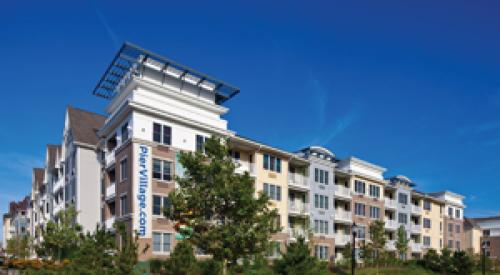When home builders refer to comfort, they often mean a good HVAC system or a well-sealed building envelope — a foundation system likely doesn't come to mind.
| Here are resources to help you learn more about FPSFs: NAHB Research Center, “Revised Builder's Guide to Frost Protected Shallow Foundations,” September 2004, at www.toolbase.org under Design & Con-struction Guides. “Frost Protected Shallow Foundations Save Time, Money,” PATH Case Study, March 2006, available online at www.pathnet.org. Click on Practices and search for Tierra Concrete Homes in Pueblo County, CO. Links to Articles: Frost Protected Shallow Foundations Save Time, Money Revised Builder's Guide to Frost Protected Shallow Foundations |
But a good foundation system is integral to a comfortable end product, and frost-protected shallow foundations can get you there. When the slab is insulated from the outside, Frost-Protected Shallow Foundations (FPSFs) make a home warmer in winter and cooler in summer — which means they're also energy efficient. Add to that fewer materials and reduced construction time and expense and you get a system some builders swear by.
About 10 years ago, builder Judy Fosdick started to specialize in durable and energy-efficient single-family custom homes. This led to FPSFs, which changed the way she does business. Fosdick, the co-owner of Tierra Concrete Homes in Fowler, Colo., and her team now install FPSFs in every home they build.
Foundation for a Better Home"The beauty of FPSFs is that they let you take advantage of the heat in the building slab and the surrounding soil to raise the frost depth," Fosdick says. "With a correctly insulated slab and footings, you don't lose that heat. And since you've got a warmer slab, you don't have to worry about frost heave."
FPSFs require no excavation below the frost line. The bottoms of FPSF footings are placed only 12 to 16 inches below grade. Compare that to the 3 foot-plus depths required for typical construction, and the labor savings are evident.
Vertical insulation — either expanded polystyrene (EPS) or extruded polystyrene (XPS) — is placed at the outside edge of the foundation and extends from above grade to the bottom of the footing. The insulation redirects heat that would have been lost from the building, keeping it in the foundation and preventing the winter cold from penetrating below the foundation. With insulation along the outside edges, floors at the perimeter of the home are significantly warmer, reducing heat loss.
The National Renewable Energy Laboratory monitored one of Fosdick's homes in 2005.
|
 A section detail showing properly placed insulation protection. Both illustrations shown above are from the NAHB Research Center's Revised Builder's Guide to Frost Protected Shallow Foundations, which is available online at www.toolbase.org under Design & Construction Guides. |
"The results showed that the foundation inside the insulation on the north-facing walls never dipped below 50 degrees during the winter, despite below-freezing temperatures outside," she says.
In colder climates, "wing" insulation extends outward horizontally from the footing. The colder the weather, the further the wing insulation extends. As a result, FPSFs are effective in a variety of cli-mates. However, their popularity remains greatest in colder states where frost heave is an issue.
Code AcceptanceFPSFs aren't without their challenges; getting through code approval is one of them.
"Getting [customer] buy-in is easy; getting approval from building department officials is a little more difficult," Fosdick says.
Builders have the tools to effectively educate uninformed officials. The foundation system is included in the 2000 and 2003 edition of the International Residential Code (IRC). The American Society of Civil Engineers developed a standard, "Design and Construction of Frost-Protected Shallow Foundations." The NAHB Research Center also produced the "Design Guide for Frost-Protected Shallow Foundations" in 2004. Note that in some areas of heavy termite infestation, local codes may limit the use of rigid foam insulation on the outside of the foundation or require termite-resistant insulation.
"The first time we proposed using FPSFs, the building official had never heard of them and was inclined to disallow them, so I immediately asked about their appeals process," Fosdick says. "I got on the appeals board agenda and came in with my engineer and our pile of documentation from the NAHB Research Center."
By providing research and referencing two case studies, they convinced the board. The whole process only took a few weeks, Fosdick says.
 Before tilt up, cast-in-place concrete walls are fitted with 2" polystyrene insulation, electrical boxes, and blockouts for windows and doors. |
Bill Eich of Eich Construction in Spirit Lake, Iowa, first learned about FPSFs in 1984. He, too, had to educate his local code officials when he started. However, he says FPSFs have become standard practice in his area, and officials now approach him for opinions on proposed FPSF plans.
Putting FPSFs to WorkFPSFs' impact can be seen in builders' bottom line.
With FPSFs, Fosdick discovered, the time, labor and equipment required for deeper excavation disappeared.
"FPSFs don't require any special tools or materials, other than the insulation itself. It's pretty easy to incorporate it into standard building practices," she says.
A 1988 study by the NAHB Research Center showed a 15 to 21 percent cost savings with FPSF over conventional foundations because of labor and equipment costs. In individual projects, builders have reported savings of $635 to $4,750.
Because the rigid polystyrene foam is left in place, once the method is mastered, crews find FPSFs easier and faster to install than conventional foundations. Detailing the outside edge of the foam with a durable, attractive finish is the biggest challenge, but Eich says the entire process requires minimal training.
"I wouldn't do a foundation any other way," Fosdick says.
| Acknowledgements | ||
| Scott Shepherd writes about better building practices on behalf of the Partnership for Advancing Technology in Housing (www.pathnet.org). PATH is administered by the U.S. Department of Housing and Urban Development. Learn more at www.pathnet.org. | ||









